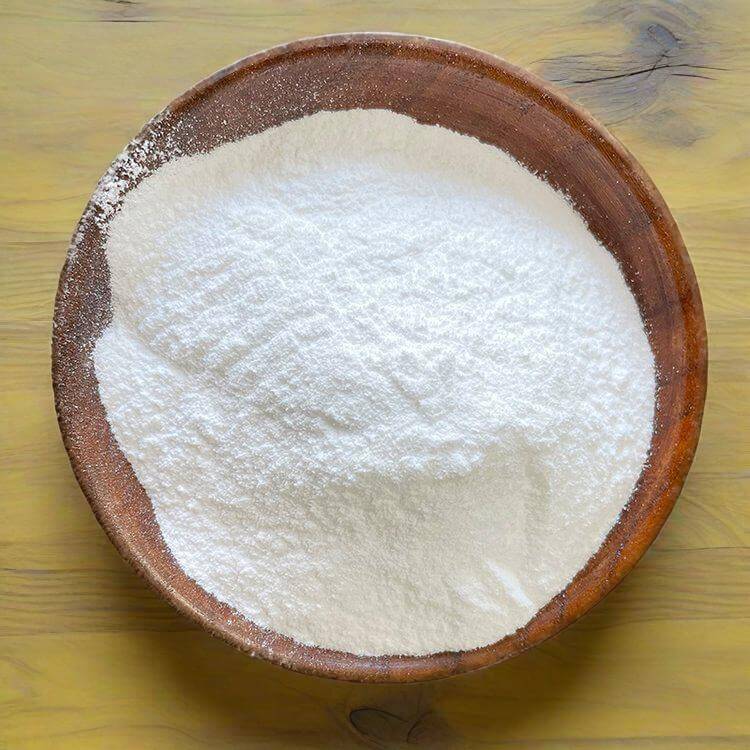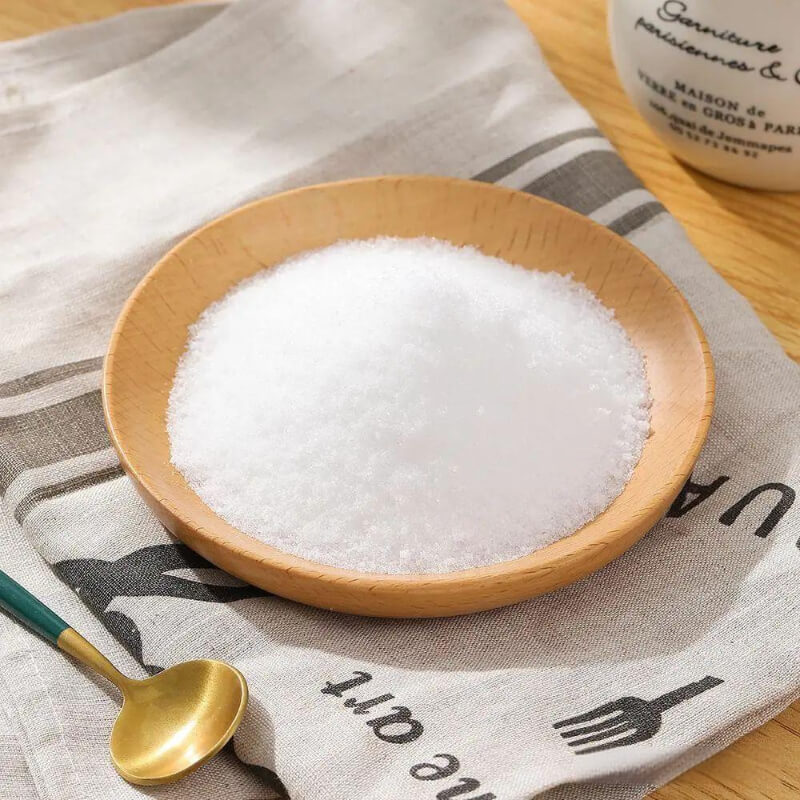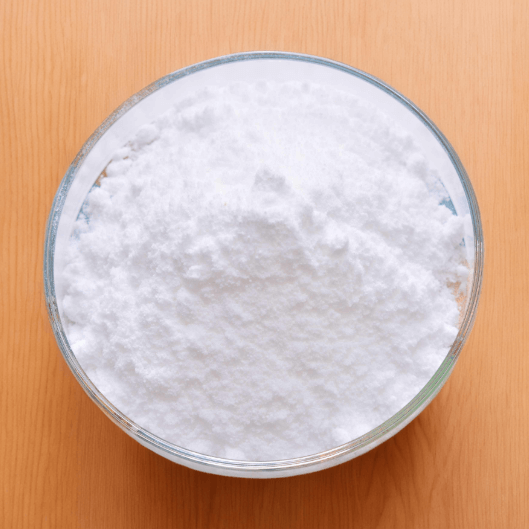D-mannose Granule
D-Mannose granule details:
Specification: 98%-102%HPLC
Mesh: 20mesh; 30mesh; 80mesh
Certificate: ISO22000; ISO14001; ISO9001; FSSC22000; GMP; Kosher
Annual Production Capacity: About 500 tons
Shelf Life: 36 months
Features: Monosaccharide; Light sweet taste; Water-soluble; Non-GMO; Allergen (soy, gluten) free; Pesticides free; Low fat; Low calories; Good flowability; Originated from natural maize.
Application:Pharmaceutical and medicine; Dietary supplement; Basic nutritional ingredients; Food and beverages; Food additives and Cosmetics,. etc.
Main function: Keeping a healthy urinary system and help preventing from UTI.
CAS NO.: 3458-28-4
Product Introduction:
D-Mannose is one of the monosaccharides, appearence is crystal or crystalline granule with slightly sweet and bitter taste. It is commonly used as sweetener and food addictives and can be cunsumed directly. D-Mannose granule is sourced from glucose(corn/maize), which made it natural resources and no other chemical additives added.
D-Mannose is well known for Keeping a healthy urinary system around the world. Compared with antibiotic, no doubt that D-Mannose is a natural remedy when using for UTI treatment. D-Mannose has a bad metabolism in human body, so it can make blood-sugar level unchanged which also can be taken by diabetics. Except for UTI treatment, D-mannose have a good effects on regulating the immune system,regulate the immune system,promote wound healing, anti-inflammatory effect, inhibit tumor growth and metastasis, prevent and ameliorate urinary tract infections.
D-Mannose Granule Specification:
| Testing Item | Specification | Test Method |
| Clarity | Clear and colorless | Visual |
| Assay | 98.0%–102% | HPLC |
| Melting Point | 126 – 134 °C | USP-NF<741> |
| Specific Rotation | +13.3° – +14.3° | USP-NF<781> |
| Loss on Drying | ≤ 1.0 % | USP-NF<731> |
| Residue on Ignition | ≤ 0.1% | USP-NF<281> |
| Bulk Density(g/ml) | 0.55-0.75 | USP-NF<616> |
| Tapped Density(g/ml) | 0.65-0.85 | USP-NF<616> |
| Total Heavy Metals | ≤ 10 mg/kg | USP-NF<231> |
| Arsenic (As) | ≤ 1.0 mg/kg | ICP-MS |
| Cadmium (Cd) | ≤ 0.5 mg/kg | ICP-MS |
| Lead (Pb) | ≤ 1.0 mg/kg | ICP-MS |
| Mercury (Hg) | ≤ 0.1 mg/kg | ICP-MS |
| Total Plate Count | ≤ 500 cfu/g | USP-NF<2021> |
| Molds and Yeasts | ≤ 100 cfu/g | USP-NF<2021> |
| Salmonella | Absence/25g | USP-NF<2022> |
| E. Coli | Absence/10g | USP-NF<2022> |
| Staphylococcus aureus | Absence/10g | USP-NF<2022> |
Remark: Bulk density and tapped density can be adjusted under your needs. If you have any orther special quality request for D-mannose, please send us email and we can check it for you accordingly.
Production Flow Process:
Glucose→Chemical Isomers→Decoloration→Dissociative Desalination→Chromatographic→Mannose Phase→Concentration→Crystallization→Dissolution and Decolorization→Concentration→Crystallization→Drying and Packing→Finished Products.
How does D-Mannose works in treating Urinary Tract Infection(UTI)?
You may wonder how D-Mannose works in UTI treatment? Urinary tract infections (UTIs) are one of the most prevalent bacterial diseases in the world, especially women are the easiest susceptible group to be infected. As we know, D-Mannose cannot be metabolized well in the human body after oral administration, about 90% D-Mannose will excrete through urine from the body, the residue will be discharged within the next 8 hours. During this process, blood sugar will not significantly increase. Based on research, UTI is mainly caused by bacteria E-coli, they like to adhere to the bladder wall which cause inflammatory response. Well, E-coli have a “sweet teeth”, When there is a large amount of D-Mannose in bladder, E-coli will depart from the bladder wall and go with D-Mannose together excreting out of the body through urine.
It is also a common method for using antibiotics to cure UTI, well, from a lot of patients’ feedback, that is very easy to have drug dependence if always using antibiotics as UTI itself is a kind of disease that is prone to recurrence. Also frequent antibiotics using will break the balance of one's own microbiota. For D-Mannose, it is a much more natural remedy for keeping a healthy urinary system.
What’s the main difference between D-Mannose and Cranberry extract for UTI treatment?
There are lots of fruits that content natural D-Mannose, for example, hawthorn, cranberry, tangerine, beans, nuts, berry fruits, cassava, and seaweed. In the market, cranberry extract are also widely used in helping preventing UTI, if some already get infected, it is much better to take D-mannose directly as it is with higher content 98%-102% which cranberry can not reach anyway.
FAQ:
1: How can I get a sample?
We can offer 20-200g free sample for your testing based on different products.
2: MOQ(Minimum Order Quantity)
It is ok for 1kg-10kg for trail order, for bulk order, MOQ is 25kg.
3: How do you control like pesticides residue, heavy metal, microbio, physical index or other Hazardous substances for each product?
We control them from raw material, will ask raw material supplier to test. After all items are qualified, materials are accepted by us. For heavy metal, microbio and physical index like assay finished products, we test in factory lab, for pesticides residue and other index we test it in third lab such as SGS and Eurofins or based on customer’s request.
4: When I will get reply for my inquiry?
Our sales will reply you within 24hours, if it is very urgent, please call us directly.


